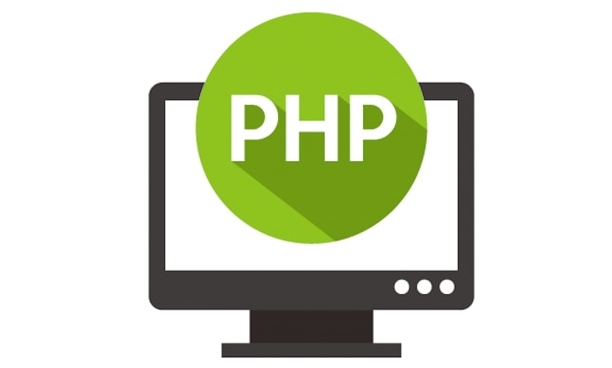How to set a default value for a PHP function parameter?
Jul 05, 2025 am 02:45 AMTo set a default value for a PHP function parameter, assign the value directly in the function definition using an equals sign (=), and ensure defaults are only used for trailing parameters. 1. Assign default values inline: function greet($name = "Guest"). 2. Use null as a placeholder when the default needs runtime logic: function logMessage($message, $level = null). 3. Avoid mutable defaults like arrays or objects in parameters; initialize them inside the function body instead to prevent unexpected behavior across calls.

Sure, here's how you can set a default value for a PHP function parameter — it’s pretty straightforward and commonly used when building flexible functions.

Just assign the value in the function definition
When defining a function, simply add an equals sign (=) after the parameter name followed by the default value. This way, if the caller doesn't provide that argument, the default will be used instead.

For example:
function greet($name = "Guest") {
echo "Hello, $name!";
}Calling greet() without any arguments will output:Hello, Guest!

And calling greet("John") would output:Hello, John!
A few things to note:
- Only parameters at the end of the list can have defaults (unless you're using PHP 8 named arguments).
- You can use expressions too — not just static values.
- Be careful with mutable defaults like arrays — more on that below.
Use null as a placeholder if needed
Sometimes you might want to accept a parameter but allow it to be optional without assuming a specific default right away. In this case, you can set the default to null and then handle it inside the function.
Example:
function logMessage($message, $level = null) {
if ($level === null) {
$level = 'info';
}
echo "[$level] $message\n";
}This is helpful when the default depends on runtime conditions or needs logic before being assigned.
Also useful for optional callbacks or resources that aren’t easy to express inline.
Watch out for default arrays and objects
A common mistake is trying to set a default array or object directly in the parameter list, like:
// Don't do this
function setData($options = []) {
// ...
}In older versions of PHP, this might behave unexpectedly because the same array instance could be reused between calls. It’s safer to default complex types to null and initialize them inside the function body.
Better approach:
function setData($options = null) {
if ($options === null) {
$options = [];
}
// Now safe to modify $options
}Same goes for objects — don’t try to instantiate them directly in the parameter list unless you're sure about how your PHP version handles it.
Summary (not really)
That’s basically how default parameters work in PHP. It’s simple but powerful once you know the caveats — especially around mutable defaults and order of parameters. Doesn't look complicated, but it's easy to trip up if you're not paying attention.
The above is the detailed content of How to set a default value for a PHP function parameter?. For more information, please follow other related articles on the PHP Chinese website!

Hot AI Tools

Undress AI Tool
Undress images for free

Undresser.AI Undress
AI-powered app for creating realistic nude photos

AI Clothes Remover
Online AI tool for removing clothes from photos.

Clothoff.io
AI clothes remover

Video Face Swap
Swap faces in any video effortlessly with our completely free AI face swap tool!

Hot Article

Hot Tools

Notepad++7.3.1
Easy-to-use and free code editor

SublimeText3 Chinese version
Chinese version, very easy to use

Zend Studio 13.0.1
Powerful PHP integrated development environment

Dreamweaver CS6
Visual web development tools

SublimeText3 Mac version
God-level code editing software (SublimeText3)
 PHP Variable Scope Explained
Jul 17, 2025 am 04:16 AM
PHP Variable Scope Explained
Jul 17, 2025 am 04:16 AM
Common problems and solutions for PHP variable scope include: 1. The global variable cannot be accessed within the function, and it needs to be passed in using the global keyword or parameter; 2. The static variable is declared with static, and it is only initialized once and the value is maintained between multiple calls; 3. Hyperglobal variables such as $_GET and $_POST can be used directly in any scope, but you need to pay attention to safe filtering; 4. Anonymous functions need to introduce parent scope variables through the use keyword, and when modifying external variables, you need to pass a reference. Mastering these rules can help avoid errors and improve code stability.
 How to handle File Uploads securely in PHP?
Jul 08, 2025 am 02:37 AM
How to handle File Uploads securely in PHP?
Jul 08, 2025 am 02:37 AM
To safely handle PHP file uploads, you need to verify the source and type, control the file name and path, set server restrictions, and process media files twice. 1. Verify the upload source to prevent CSRF through token and detect the real MIME type through finfo_file using whitelist control; 2. Rename the file to a random string and determine the extension to store it in a non-Web directory according to the detection type; 3. PHP configuration limits the upload size and temporary directory Nginx/Apache prohibits access to the upload directory; 4. The GD library resaves the pictures to clear potential malicious data.
 Commenting Out Code in PHP
Jul 18, 2025 am 04:57 AM
Commenting Out Code in PHP
Jul 18, 2025 am 04:57 AM
There are three common methods for PHP comment code: 1. Use // or # to block one line of code, and it is recommended to use //; 2. Use /.../ to wrap code blocks with multiple lines, which cannot be nested but can be crossed; 3. Combination skills comments such as using /if(){}/ to control logic blocks, or to improve efficiency with editor shortcut keys, you should pay attention to closing symbols and avoid nesting when using them.
 How Do Generators Work in PHP?
Jul 11, 2025 am 03:12 AM
How Do Generators Work in PHP?
Jul 11, 2025 am 03:12 AM
AgeneratorinPHPisamemory-efficientwaytoiterateoverlargedatasetsbyyieldingvaluesoneatatimeinsteadofreturningthemallatonce.1.Generatorsusetheyieldkeywordtoproducevaluesondemand,reducingmemoryusage.2.Theyareusefulforhandlingbigloops,readinglargefiles,or
 Tips for Writing PHP Comments
Jul 18, 2025 am 04:51 AM
Tips for Writing PHP Comments
Jul 18, 2025 am 04:51 AM
The key to writing PHP comments is to clarify the purpose and specifications. Comments should explain "why" rather than "what was done", avoiding redundancy or too simplicity. 1. Use a unified format, such as docblock (/*/) for class and method descriptions to improve readability and tool compatibility; 2. Emphasize the reasons behind the logic, such as why JS jumps need to be output manually; 3. Add an overview description before complex code, describe the process in steps, and help understand the overall idea; 4. Use TODO and FIXME rationally to mark to-do items and problems to facilitate subsequent tracking and collaboration. Good annotations can reduce communication costs and improve code maintenance efficiency.
 Quick PHP Installation Tutorial
Jul 18, 2025 am 04:52 AM
Quick PHP Installation Tutorial
Jul 18, 2025 am 04:52 AM
ToinstallPHPquickly,useXAMPPonWindowsorHomebrewonmacOS.1.OnWindows,downloadandinstallXAMPP,selectcomponents,startApache,andplacefilesinhtdocs.2.Alternatively,manuallyinstallPHPfromphp.netandsetupaserverlikeApache.3.OnmacOS,installHomebrew,thenrun'bre
 How to access a character in a string by index in PHP
Jul 12, 2025 am 03:15 AM
How to access a character in a string by index in PHP
Jul 12, 2025 am 03:15 AM
In PHP, you can use square brackets or curly braces to obtain string specific index characters, but square brackets are recommended; the index starts from 0, and the access outside the range returns a null value and cannot be assigned a value; mb_substr is required to handle multi-byte characters. For example: $str="hello";echo$str[0]; output h; and Chinese characters such as mb_substr($str,1,1) need to obtain the correct result; in actual applications, the length of the string should be checked before looping, dynamic strings need to be verified for validity, and multilingual projects recommend using multi-byte security functions uniformly.
 Learning PHP: A Beginner's Guide
Jul 18, 2025 am 04:54 AM
Learning PHP: A Beginner's Guide
Jul 18, 2025 am 04:54 AM
TolearnPHPeffectively,startbysettingupalocalserverenvironmentusingtoolslikeXAMPPandacodeeditorlikeVSCode.1)InstallXAMPPforApache,MySQL,andPHP.2)Useacodeeditorforsyntaxsupport.3)TestyoursetupwithasimplePHPfile.Next,learnPHPbasicsincludingvariables,ech






